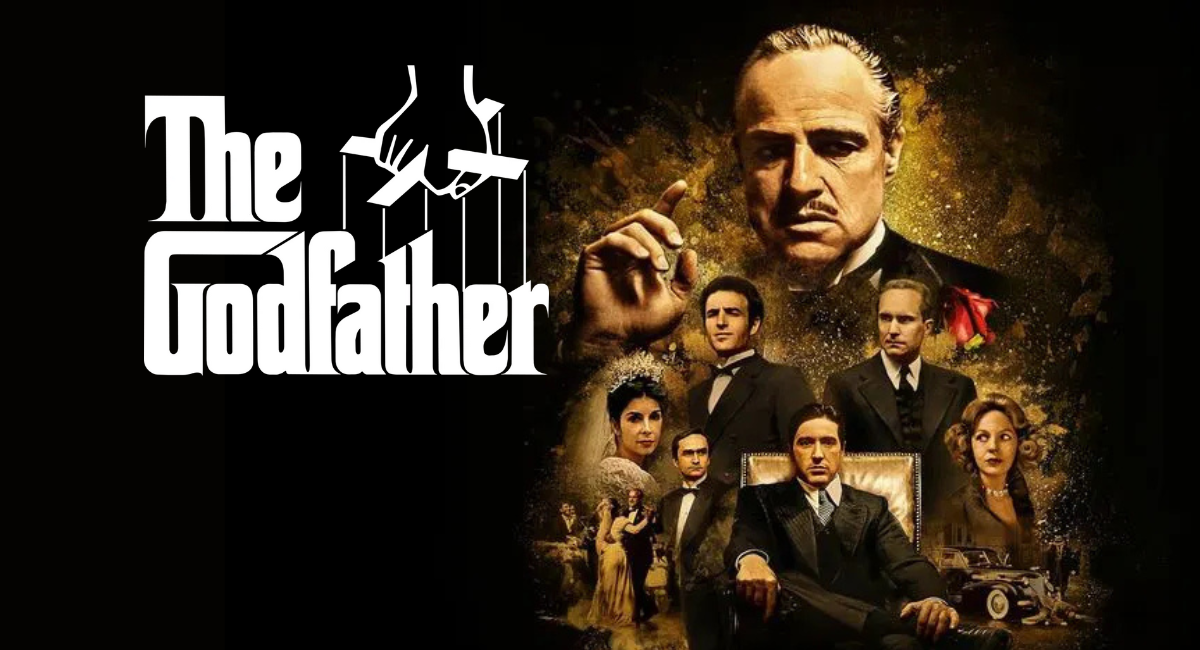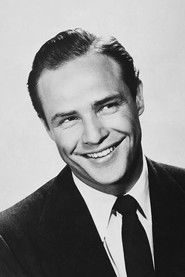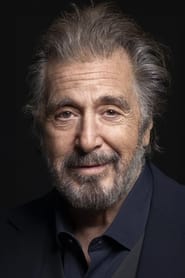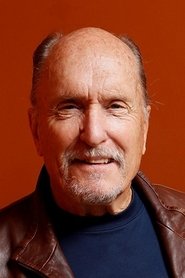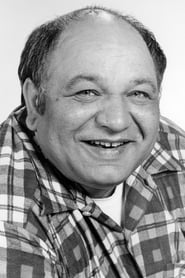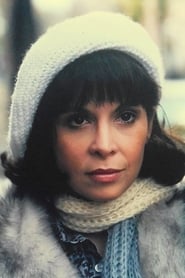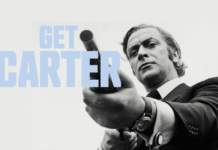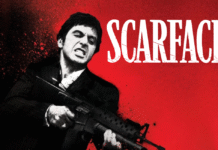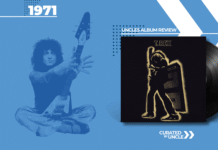The Godfather (1972): Leave the Gun, Take the Legacy
Some films get called “masterpieces” because critics ran out of adjectives. The Godfather earns it the hard way – by orchestrating murder, betrayal and pasta consumption into a cinematic ballet of bullet holes and brooding silences. Directed by Francis Ford Coppola and released in 1972, this film didn’t just influence the gangster genre. It drop-kicked it into the stratosphere, offered it a cigar and whispered, “I’m gonna make you an offer you can’t refuse.”
Half a century later, The Godfather remains the blueprint for how to turn organised crime into an art form – complete with operatic tragedy, moral ambiguity and a patriarch who sounds like a lion with laryngitis.
Table of Contents
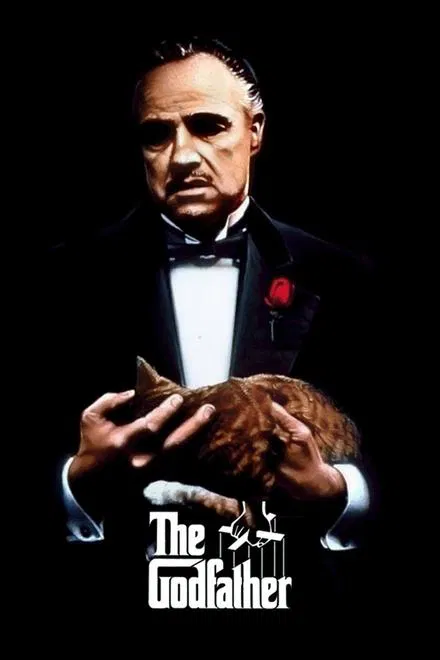
A Quick Recap: Family First, Everything Else Gets Whacked
For the three people on Earth who haven’t seen it: The Godfather follows the Corleone family, an Italian-American dynasty built on olive oil, extortion and murder-by-piano-wire. At the centre is Vito Corleone (Marlon Brando), a crime boss who prefers diplomacy, unless of course you insult him – in which case he’ll send your prized racehorse’s head on a one-way trip to your Egyptian cotton sheets.
Vito’s youngest son, Michael (Al Pacino), begins the film as the clean-cut war hero. You know – the kind of guy who probably says “golly” unironically. But by the final scene, he’s fully submerged in the family business, baptising his nephew while metaphorically waterboarding his own soul.
So, basically: it’s a heartwarming tale about the importance of family. Unless you’re Fredo. Poor, sweet, clueless Fredo.
Casting: Brando Mumbles, Pacino Smoulders
Let’s address the elephant in the tuxedo: Marlon Brando, whose portrayal of Vito Corleone is so iconic that your drunk Dad still quotes him at family barbecues. Brando stuffed cotton in his cheeks, dropped his voice to sub-basement levels, and somehow transformed mumbling into a Shakespearean dialect.
Then there’s Al Pacino. Not the “hoo-ah!” version from Scent of a Woman, but the quiet, calculating, dead-eyed Pacino who gradually replaces his heartbeat with the sound of a gun cocking. Watching Michael’s transformation is like seeing a puppy slowly turn into a pit bull with PTSD.
The supporting cast is a murderer’s row of acting talent: James Caan as hot-headed Sonny (who treats diplomacy like it owes him money), Robert Duvall as Tom Hagen (the family’s legal consigliere and human sedative) and Diane Keaton as Kay, who mostly looks confused – and fair enough, since she marries into a family that treats mass murder as foreplay.

Direction & Screenplay: Coppola’s Bloody Ballet
Francis Ford Coppola didn’t just direct The Godfather, he hand-crafted it from shadow and sorrow. Based on Mario Puzo’s novel (equal parts pulpy and poetic), Coppola took what could have been another gangster shoot-em-up and instead created a Shakespearean epic where guns are the punctuation and betrayal is the main clause.
The screenplay is loaded with unforgettable lines – “I’m gonna make him an offer he can’t refuse,” “A man who doesn’t spend time with his family can never be a real man,” and of course, “Leave the gun, take the cannoli.” Because if you’re going to commit murder, at least do it with carbs.
It’s less about who pulls the trigger and more about why they do – usually for power, pride, or because someone looked at them funny over dinner.
The Godfather and the American Dream (Or, The Nightmare in a Fedora)
The Godfather is less about crime and more about the rotting carcass of the American Dream. It suggests that in a country built on capitalism, corruption isn’t a bug – it’s the bloody feature.
The Corleones are immigrants who climb the social ladder one corpse at a time, proving that if you work hard, stay loyal and have absolutely no moral compass, you too can run a criminal empire from your Long Island mansion.
Michael’s arc is a tragic indictment of the system. He begins as the outsider, the one who “isn’t like them.” By the end, he’s outdoing them – colder, smarter, deadlier. It’s the kind of character development that makes you want to scrub your soul with steel wool.

Iconic Scenes: Say Hello to Sleep-Deprived Film Students
Let’s run through a few of the greatest hits that have been dissected by film students, meme-makers and Mafia cosplayers for decades:
• The Wedding (aka “Godfather: The Sitcom Pilot”)
The film opens with a wedding that doubles as a smorgasbord of exposition and criminal networking. We meet the entire Corleone clan, every relative, associate and vaguely threatening old man with a pinky ring.
• The Horse Head
Forget jump scares. The horse head scene is horror via decor. Waking up next to a decapitated racehorse is apparently Coppola’s way of saying “good morning.”
• The Toll Booth Massacre
Sonny’s death by excessive lead poisoning is one of the most brutal scenes ever put to film. He gets ventilated by roughly 8,000 bullets in what feels like the mafia equivalent of unsubscribing from life.
• The Baptism Bloodbath
Michael attends his nephew’s baptism while his enemies are assassinated in parallel. It’s a cross-cutting masterclass and possibly the only time in cinematic history where holy water and homicide share a rhythm.
Music: The Soundtrack of a Cigarette-Stained Soul
Nino Rota’s haunting score is essentially the film’s beating heart – or maybe its slow, menacing pulse. The main theme has been used in everything from parodies to wedding playlists (yes, really), proving that nothing says “I love you” like the musical equivalent of a hitman lurking behind a curtain.
The music isn’t just background – it’s character. Melancholy, romantic, sinister. Like Sinatra on a really bad day.
Critical Reception: Universally Worshipped, Except by People Who Are Wrong
Critics adored The Godfather upon release and audiences queued around the block like it was selling the secrets of immortality. It won three Oscars, including Best Picture, Best Actor (Brando) and Best Adapted Screenplay. Brando famously declined his Oscar, sending a Native American activist in his place, because nothing says “thank you” like televised protest theatre.
Over time, it’s cemented its place at the summit of just about every “Greatest Films of All Time” list, unless the list was compiled by someone who thinks Paul Blart: Mall Cop was misunderstood.
The Godfather also found its way on to our ranking list The 50 Greatest Gangster Movies Of All Time, check it out after you have finished here.

Themes: Family, Power and Pasta
At its core, The Godfather is about family – both the kind you’re born into and the kind you make offers to. It’s a study of power dynamics, loyalty and the American Dream, albeit one where the dream involves racketeering and the occasional assassination.
The film explores the corrupting influence of power, the thin line between business and personal affairs and the idea that sometimes, keeping your friends close and your enemies closer means everyone ends up at the same dinner table – armed.
Behind the Scenes: Drama Off-Camera
The production of The Godfather was almost as tumultuous as the film’s plot. Coppola faced constant threats of being fired and the studio was skeptical about casting Pacino, considering him too short and too unknown. Brando, ever the professional, reportedly needed cue cards and had a penchant for improvisation that kept everyone on their toes.
Despite – or perhaps because of – these challenges, the film emerged as a cohesive and compelling narrative, proving that sometimes, chaos breeds brilliance.
Legacy: Still Making You an Offer You Can’t Refuse
The Godfather didn’t just inspire other films – it reshaped cinema. From Goodfellas to The Sopranos, its influence oozes through the genre like marinara through a white tablecloth.
It also changed the public image of the Mafia. Before The Godfather, gangsters were thugs in pinstripes. After, they were tragic antiheroes – flawed, principled, occasionally weepy – but also, let’s not forget, murderers with the emotional range of a guillotine.
Coppola’s film transformed crime into tragedy, corruption into poetry and family dinners into battlegrounds.
Trivia: Fun Facts You Can’t Refuse
- The Cat’s Meow: The cat in the opening scene was a stray Coppola found on set. Its purring was so loud it interfered with the audio, but Brando insisted on keeping it.
- Method Acting: Brando stuffed his cheeks with cotton for the audition to achieve Vito’s distinctive jowls. For filming, he used a custom-made mouthpiece.
- Horse Head: The infamous horse head scene used a real horse’s head, sourced from a dog food company. The actor’s reaction was genuine, as he wasn’t informed beforehand.
- Casting Controversies: The studio initially wanted to cast big names like Robert Redford or Ryan O’Neal as Michael. Coppola fought for Pacino, believing he embodied the character’s transformation.
- Brando’s Oscar: Brando declined his Best Actor Oscar, sending Native American activist Sacheen Littlefeather to the ceremony to protest Hollywood’s portrayal of Native Americans.
My Final Thoughts: A Masterpiece So Good, It Makes You Want to Sleep with the Fishes (In a Good Way)
The Godfather is not just a film. It’s a mood. A statement. A slow-burning, sepia-toned fever dream about power, loyalty and how to get away with murder if you’re polite and wear a tuxedo.
Watching it now, over 50 years later, it’s still startling how little it’s aged. Sure, the suits are wide-lapelled and everyone smokes like a chimney with abandonment issues, but the themes? Timeless. Family, power, betrayal – all told through the lens of a loaded revolver and a family dinner table where someone might get dessert… or shot.
If you’ve somehow never seen it, rectify that immediately. If you have? Watch it again. And then apologise to your father for not taking over the family business. Unless it’s insurance. In which case, you made the right call.

If You Like The Godfather, I Recommend These Movies:
- Scarface (1983) – Pacino trades whispers for shouting, inhaling cocaine like it’s air, in a neon-lit descent into capitalist hell.
- Goodfellas (1990) – Scorsese’s coke-fuelled mob ride where being a wiseguy is fun until the paranoia kicks in and everyone’s in a shallow grave.
- Once Upon a Time in America (1984) – Four hours of nostalgia, betrayal and opium-fuelled regret – like The Godfather on Ambien.
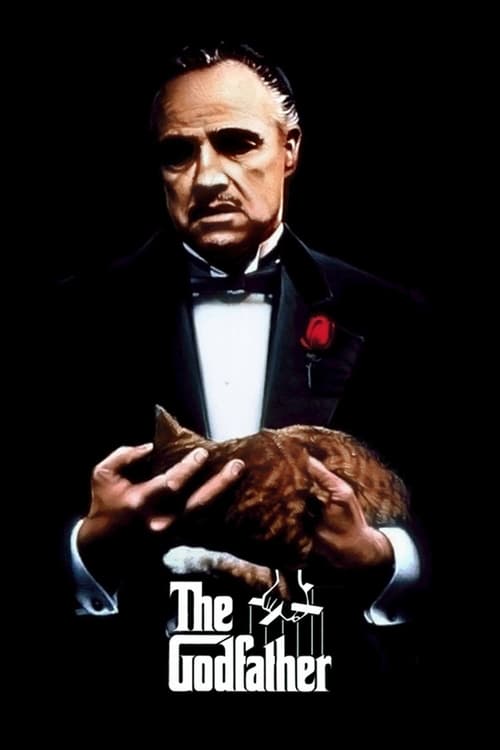
The Godfather
Don Vito Corleone
Michael Corleone
Sonny Corleone
Tom Hagen
Clemenza
Kay Adams
Connie Corleone Rizzi
Carlo Rizzi



